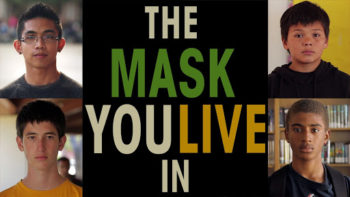On Monday, Good Morning America had a disturbing report on the “thigh gap” obsession which is spreading amongst some teenage girls. ABC’s blog describes a “thigh gap” as “a clear space, or gap, that can be seen between the thighs when a girl is standing with her knees together,” and it’s something more and more teenage girls feel pressured to aspire to, as evidenced by the numbers sharing images of ultra-skinny models with the “thigh gap” tag on Tumblr.
Meanwhile, as teenage girls struggle with this new method of self-objectification, Victoria’s Secret introduced an advertisement earlier this year, aimed directly at teenagers, called “Bright Young Things.”* The company, famous for perpetuating the hypersexualization of women in mainstream media, is pretty clear with its message in this campaign: you are a thing, wear our clothes to be a more admired thing.
An executive at Victoria’s Secret described the campaign like this: “When somebody’s 15 or 16 years old, what do they want to be? They want to be older, and they want to be cool like the girl in college, and that’s part of the magic of what we do at Pink.” Or in other words: “These young women will eventually learn – if they haven’t already – through years of media messaging and social conditioning, that they are only valuable to society for their bodies. Why wait to indoctrinate them? This way we create 5 more years to make inordinate amounts of money off their insecurities.” So magical.
His tone-deaf comments recall those made by Esquire UK’s editor recently, in which he confidently described the hypersexualized women in his magazine as “ornamental.” Both reveal a blatant disregard for the social impact of their products and marketing.
Part of the thesis of Miss Representation (2011) is that the media only values women for their “youth, beauty and sexuality,” and now Victoria’s Secret have, inexplicably, literally turned that into an advertising slogan directed at teenage girls: bright, young, things.
So there are a number of problematic elements here (we haven’t even discussed the slogans printed on some of these items), but, in the context of the “thigh gap” discussion today, it’s the “Things” part in the name which especially troubles me. A blog on Ph.D’s and Pigtails explains:
Victoria’s Secret already has the “Sexy Little Things” and “Pretty Little Things” lines, which follow a slippery logic of sexualization and the fantasy of women as sex objects, but it’s not clear if the things are the garments or the women wearing them. Very tricky. With Bright Young Things, however, the adjective “young” gives away what “things” refers to. I don’t think people often refer to clothing as “young” (“youthful,” sure) and so it seems more likely that the things in question are the girls who are the target for the line.
Is it a big deal to encourage teenagers to see themselves as things? Coming from a brand like Victoria’s Secret, in a world that includes “thigh gap” as part of teenage girls’ vocabularies and a culture in which adult men in powerful media positions publicly compare women to cars, the answer is yes, it is a big deal to further encourage self-objectification in girls.
The American Psychological Association has said: “Perhaps the most insidious consequence of self-objectification is that it fragments consciousness. Chronic attention to physical appearance leaves fewer cognitive resources available for other mental and physical activities.” Basically this is an all-around terrible idea.
Tell Victoria’s Secret that you’re #NotBuyingIt:
Written by Imran Siddiquee at MissRepresentation.org. Follow him on Twitter @imransiddiquee
* An earlier version of this post mistakenly claimed that “Bright Young Things” was the name of a specific line of clothing made by Victoria’s Secret. It is not.



